
The United States Navy Reserve (USNR), known as the United States Naval Reserve from 1915 to 2005, is the Reserve Component (RC) of the United States Navy. Members of the Navy Reserve, called Reservists, are categorized as being in either the Selected Reserve (SELRES), the Training and Administration of the Reserve (TAR), the Individual Ready Reserve (IRR), or the Retired Reserve.
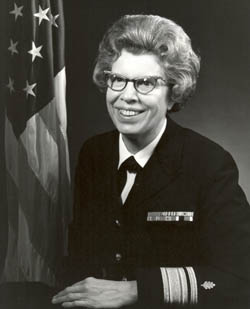
Alene Bertha Duerk became the first female admiral in the U.S. Navy in 1972. She was also the director of the U.S. Navy Nurse Corps from 1970 to 1975. She is a 1974 recipient of a Distinguished Alumni Award of Case Western Reserve University's Frances Payne Bolton School of Nursing.

Albert Joseph Herberger was a Vice Admiral of the United States Navy, and the first United States Merchant Marine Academy graduate to attain the rank.

Frances Carlotta Wilson is a retired United States Marine Corps lieutenant general, who served as the 12th president of the National Defense University.

Patricia Ann Tracey is a retired United States naval officer and the first woman to be promoted to the rank of vice admiral in the United States Navy. She held the positions of chief of naval education and training (CNET) (1996–98), Deputy Assistant Secretary of Defense for Military Personnel Policy (1998–2001), and director of navy staff from 2001 until the time of her retirement on October 1, 2004. At that time, she was also the all-time senior-ranking female officer in the United States military.

The Chief of Naval Personnel (CNP) is responsible for overall manpower readiness for the United States Navy. As such the CNP is the highest ranking human resources officer in the Navy. The CNP also serves as Deputy Chief of Naval Operations and is one of five Deputy Chiefs of Naval Operations, with the identification of N1/NT. The CNP oversees the operations of the Bureau of Naval Personnel (BUPERS), Navy Personnel Command (NPC) and the Navy Manpower Analysis Center (NAVMAC). The CNP and the other four DCNOs are nominated by the President of the United States and must be confirmed via majority vote by the Senate. The CNP and the DCNOs are appointed as a three-star vice admiral while holding office.
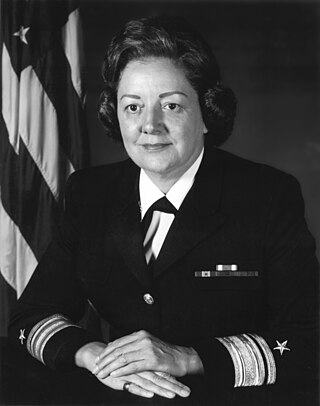
Fran McKee was the first female line officer to hold the rank of Rear Admiral in the United States Navy. She was promoted to the rank of Rear Admiral on June 1, 1976 and earned her second star in November 1978. Rear Admiral McKee was one of the first two women selected to attend the Naval War College, and was the first woman to command an activity of the Naval Security Group Command.

Ann Elisabeth Rondeau is a retired United States Navy vice admiral. During her tenure in the navy, she received two Defense Distinguished Service Medals, the Navy Distinguished Service Medal, and four Legion of Merit awards. Rondeau was the president of National Defense University and, after serving as the president of the College of DuPage, was chosen by United States Secretary of the Navy Richard V. Spencer to be president of the Naval Postgraduate School in 2019.

Rear Admiral Roberta L. Hazard was the third female line officer to be promoted to the rank of rear admiral in the United States Navy, and at the time, the highest-ranking woman in the U.S. military. She was the first woman to command a United States Naval Training Command.

Kathlene Contres, is a former United States Navy captain who was the ranking female Hispanic American line officer on active duty. She was the Commandant of the Defense Equal Opportunity Management Institute (DEOMI), the first Latina woman and the thirteenth Commandant to lead the institute since it was established in 1971. Contres retired from the United States Navy on June 4, 2010, after 30 years of service. Contres also completed two terms as the president of the Association of Naval Services Officers (ANSO).
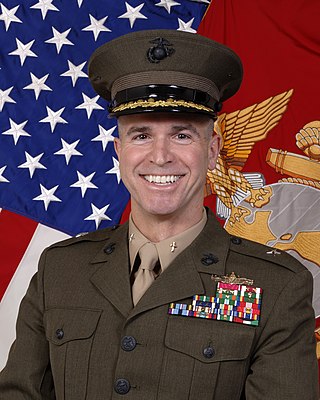
Rear Admiral Alan T. Baker, USN, is a retired American Navy officer who served as the 16th Chaplain of the United States Marine Corps from 2006 to 2009. Chaplain Baker was the first graduate of the United States Naval Academy and former Surface Warfare Officer to serve as a Chaplain Corps Flag Officer. Following his military career, Baker served as Directional Leader at Menlo Park Presbyterian Church, a 4,000-member, multi-campus church in the San Francisco Bay Area, from 2010 to 2012. He is currently principal of Strategic Foundations where he teaches, coaches and catalyzes organizations valuing the intersection of faith, learning and leadership.

Vice Admiral Walter Black Massenburg is a retired US Navy admiral and former commander of the Naval Air Systems Command in Patuxent River, Maryland.
Daniel S. Mastagni is a retired Rear Admiral of the United States Navy Reserve who, from July to September 2003 served as Commander Naval Forces Korea.

The Naval Reserve is the Primary Reserve component of the Royal Canadian Navy (RCN). The primary mission of the NAVRES is to force generate sailors and teams for Canadian Armed Forces (CAF) operations, including: domestic safety operations as well as security and defence missions, while at the same time supporting the Navy's efforts in connecting with Canadians through the maintenance of a broad national presence.

Barbara Spyridon Pope was United States Assistant Secretary of the Navy from 1989 to 1993. She came to prominence during the Tailhook scandal for her opposition to the initial investigation conducted by Rear Admiral Duvall M. Williams, Jr., which she felt was a whitewash.
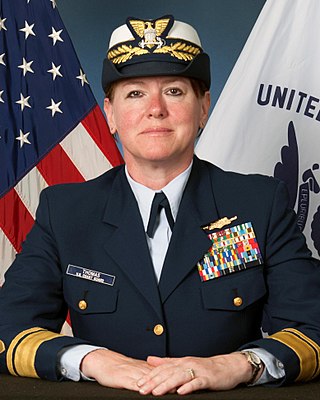
Cari Batson Thomas is a retired rear admiral of the United States Coast Guard and a 1984 graduate of the U. S. Coast Guard Academy. On January 22, 2010, Thomas became the third female commander of USCG Training Center Cape May to be advanced to a flag officer. Her final assignment was Assistant Commandant for Human Resources at the Coast Guard Academy.
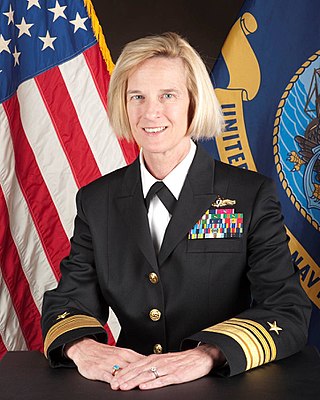
Carol M. Pottenger is a retired United States Navy flag officer. She was among the first women to be assigned to serve at sea in 1978, the first female admiral to command a major combat organization, Amphibious Force 7th Fleet/Expeditionary Strike Group Seven, encompassing the amphibious forces assigned to the western Pacific; and the first female admiral to lead a combatant force "type command", Navy Expeditionary Combat Command, charged with the manning, training and equipping of over 40,000 expeditionary sailors in preparation for combat deployments to Iraq and Afghanistan, as well as global security assistance operations. Her final naval post was with NATO as deputy chief of staff for capability and development at Supreme Allied Commander Transformation, Norfolk, Virginia, the first female officer to hold this position.
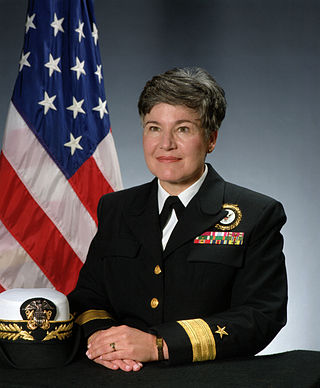
Retired Rear Admiral Barbara Elizabeth McGann was the executive director of the Advanced Math and Science Academy Charter School in Marlborough, Massachusetts until her retirement at the end of the 2010 – 2011 academic year. She was one of the first women to achieve two-star rank in the United States Navy.

William Francis Moran is a retired four-star officer with over thirty-eight years of service and experience. He began his career as a Naval Aviator and rose rapidly to hold command leadership positions at every level of the Navy.

The Naval Recruitment Training Agency (NRTA) originally called the Naval Training Department was first established in 1944 as a department within the Admiralty it underwent numerous name changes until 1 April 1995 as a new agency of the Navy Department of the British Ministry of Defence. Its role was to contribute to the operational capability of the United Kingdom Armed Forces by recruiting to the Naval Service, delivering training to the Defence community it was administered by the Chief Executive (NRTA)/Flag Officer, Training and Recruitment it was abolished in 2005.



















